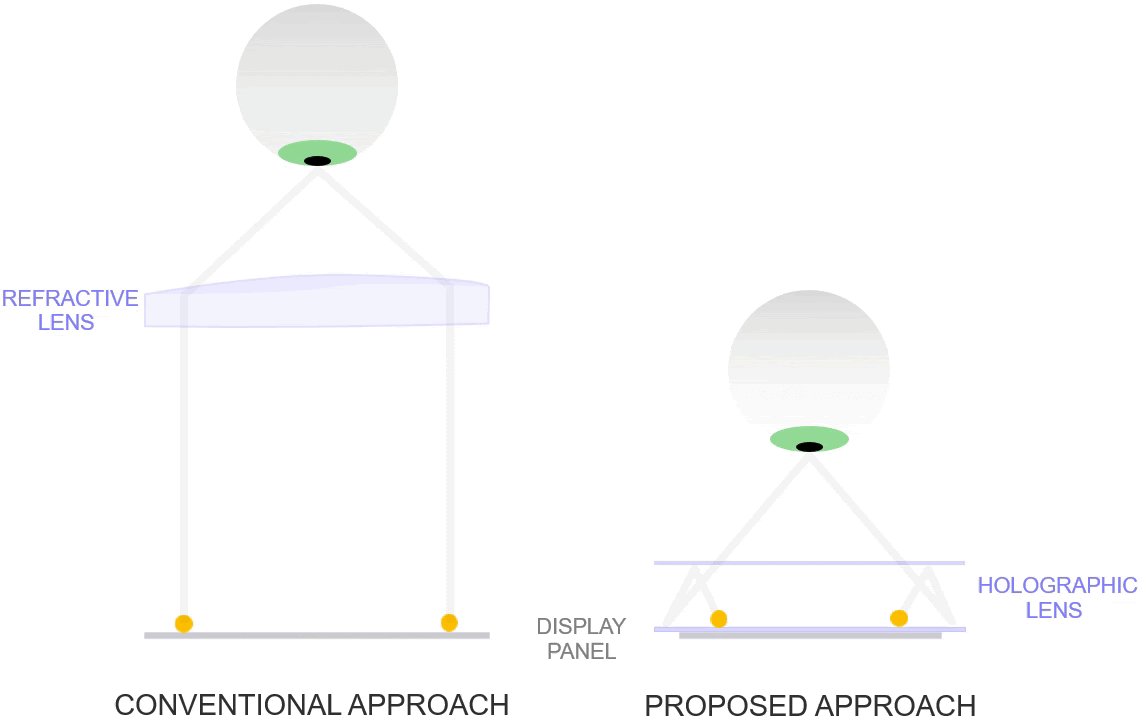- Get link
- X
- Other Apps
- Get link
- X
- Other Apps
It reminds us of the Nintendo Virtual Boy — except much smaller and decidedly greener.
What you need to know
- Facebook Reality Labs will be showing off a new VR prototype headset at SIGGRAPH 2020.
- This new prototype headset utilizes a pair of holographic lenses to significantly shrink the size and weight of the headset down.
- Current limitations of the technology include a narrower FoV and the ability to only transmit green light at this small size.
Facebook has pumped more money into virtual reality research than any other company in the world, and it regularly shows in their prototype products. From advanced hand-tracking to pancake-flat VR glasses, and even lenses that can focus on multiple layers of depth, the work at Facebook Reality Labs feels nothing short of magic at times. This latest VR prototype headset is no exception, as it utilizes holographic lenses to shrink the VR headset down to the side of an ordinary pair of sunglasses.
Facebook Reality Labs announced this new breakthrough ahead of SIGGRAPH 2020, an annual computer graphics and technology trade show which takes place virtually this year starting on August 17. The product is expected to be demoed during the show, but we've been given a sneak peak by Facebook thanks to the Facebook Research blog. These new lenses borrow concepts from holographic displays and utilizes a combination of laser illumination and polarization-based optical folding to bounce light around and eliminate the space that's needed in a traditional lens setup.

The animation above showcases the difference between traditional lenses, which take a linear light path and concentrates it into a single point via refraction, while the new holographic lenses utilize polarized lenses to reflect light several times to achieve a similar effect. This reduces the space needed between the lenses and the display to an unbelievable 9mm. By comparison, current methods place the display between one and three inches away from the lenses, which accounts for a significant portion of the size of current VR headsets.
Traditional lenses are also pretty heavy, and while upcoming headsets like the Oculus Quest 2 will be lighter than ever at around 450 grams, they pale in comparison to the 17.8 gram weight of the prototype lenses seen here. Of course, these lenses don't have any sort of battery or computing components on board, which would add a lot more weight. A 10,000mAh battery pack, for instance, weighs around 270 grams just by itself.
Still, this is likely to bring the sheer bulk and size of future-generation VR headsets down considerably — if Facebook is able to overcome two hurtles, that is. Right now, these holographic lenses sport a slightly narrower field-of-view at around 90-degrees. Compare that with the 100-130 in most VR headsets and it'll feel like the world is slightly less immersive. The big setback right now, though, is the fact that this setup an only transmit green light to the human eye. As you'll see below, that looks quite a bit like a Virtual Boy from back in the 90s, with just a tad more green instead of red, though. Facebook has a full-color prototype working, but that one is about as big as a table at this point in time.
by Nicholas Sutrich
- Get link
- X
- Other Apps

